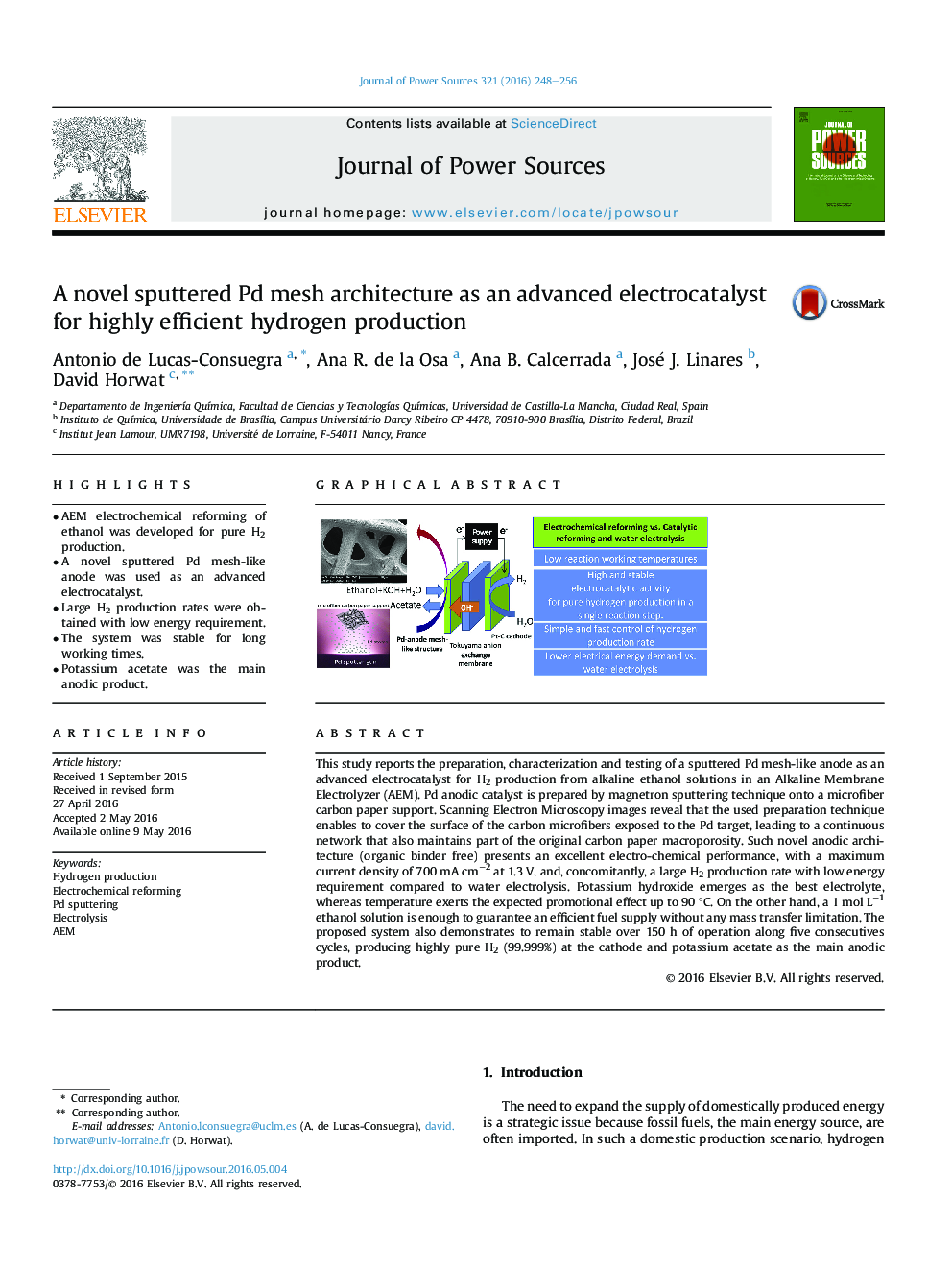| کد مقاله | کد نشریه | سال انتشار | مقاله انگلیسی | نسخه تمام متن |
|---|---|---|---|---|
| 1291802 | 1497911 | 2016 | 9 صفحه PDF | دانلود رایگان |
• AEM electrochemical reforming of ethanol was developed for pure H2 production.
• A novel sputtered Pd mesh-like anode was used as an advanced electrocatalyst.
• Large H2 production rates were obtained with low energy requirement.
• The system was stable for long working times.
• Potassium acetate was the main anodic product.
This study reports the preparation, characterization and testing of a sputtered Pd mesh-like anode as an advanced electrocatalyst for H2 production from alkaline ethanol solutions in an Alkaline Membrane Electrolyzer (AEM). Pd anodic catalyst is prepared by magnetron sputtering technique onto a microfiber carbon paper support. Scanning Electron Microscopy images reveal that the used preparation technique enables to cover the surface of the carbon microfibers exposed to the Pd target, leading to a continuous network that also maintains part of the original carbon paper macroporosity. Such novel anodic architecture (organic binder free) presents an excellent electro-chemical performance, with a maximum current density of 700 mA cm−2 at 1.3 V, and, concomitantly, a large H2 production rate with low energy requirement compared to water electrolysis. Potassium hydroxide emerges as the best electrolyte, whereas temperature exerts the expected promotional effect up to 90 °C. On the other hand, a 1 mol L−1 ethanol solution is enough to guarantee an efficient fuel supply without any mass transfer limitation. The proposed system also demonstrates to remain stable over 150 h of operation along five consecutives cycles, producing highly pure H2 (99.999%) at the cathode and potassium acetate as the main anodic product.
Figure optionsDownload as PowerPoint slide
Journal: Journal of Power Sources - Volume 321, 30 July 2016, Pages 248–256
